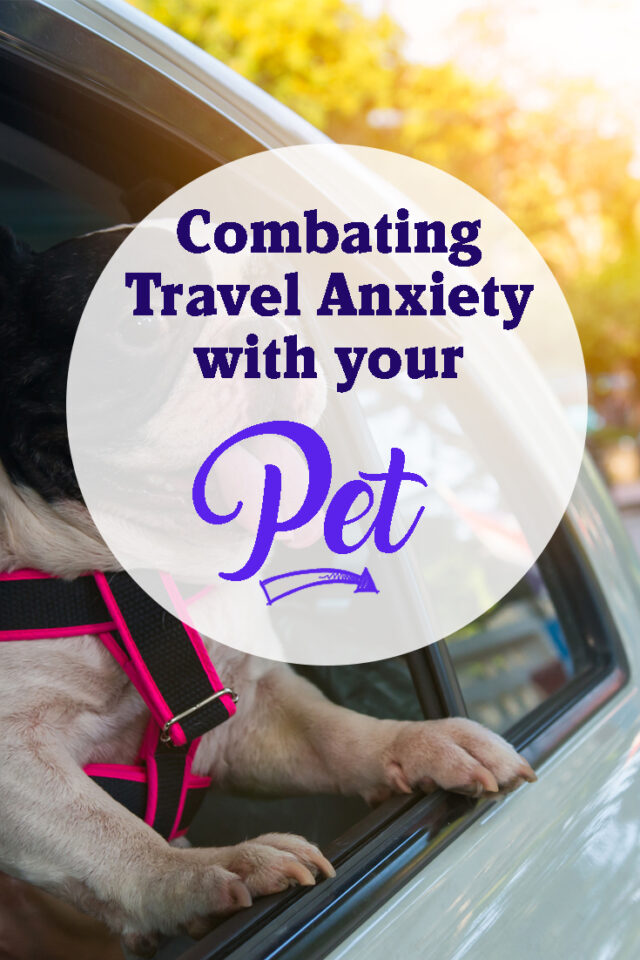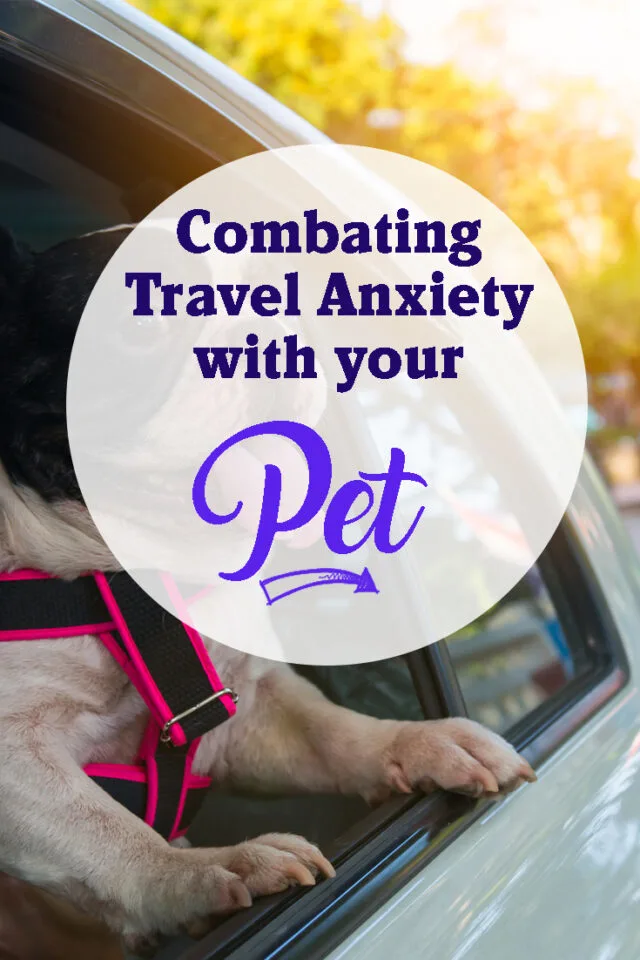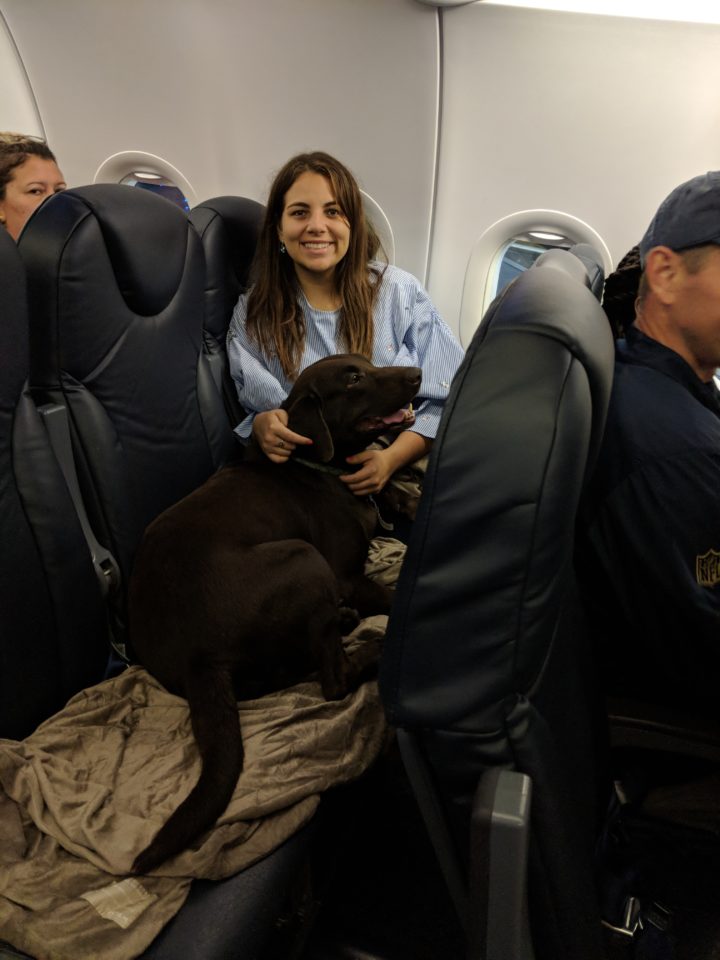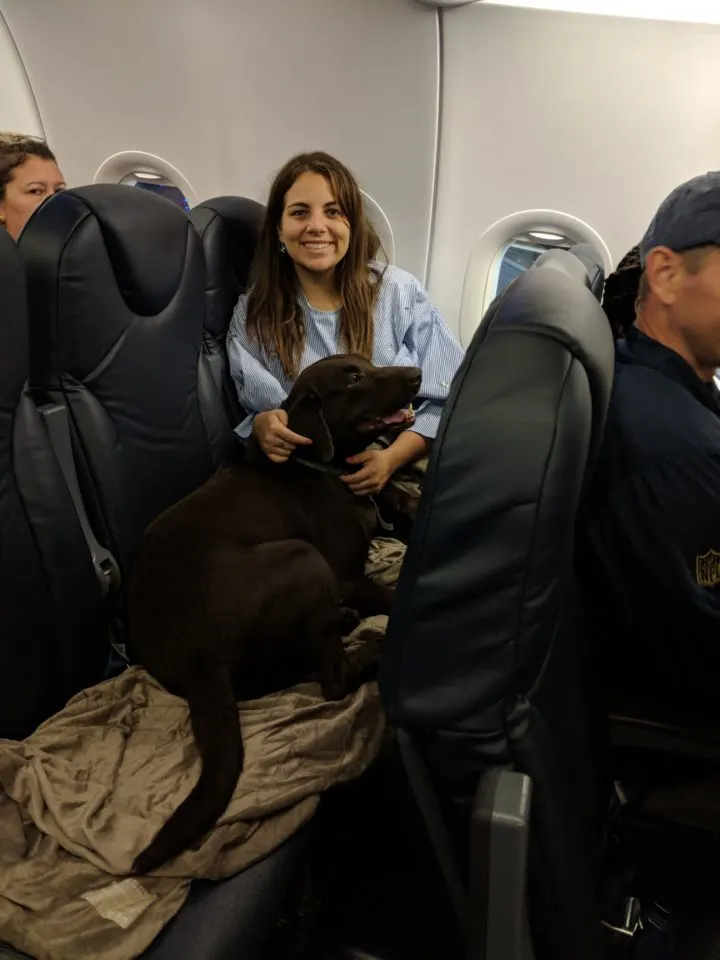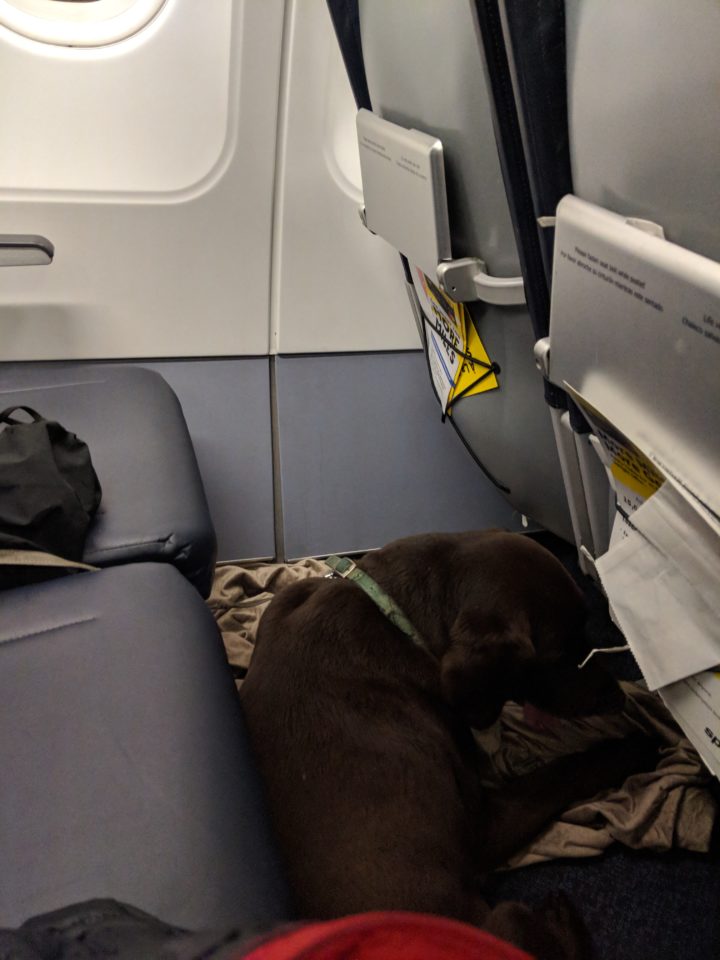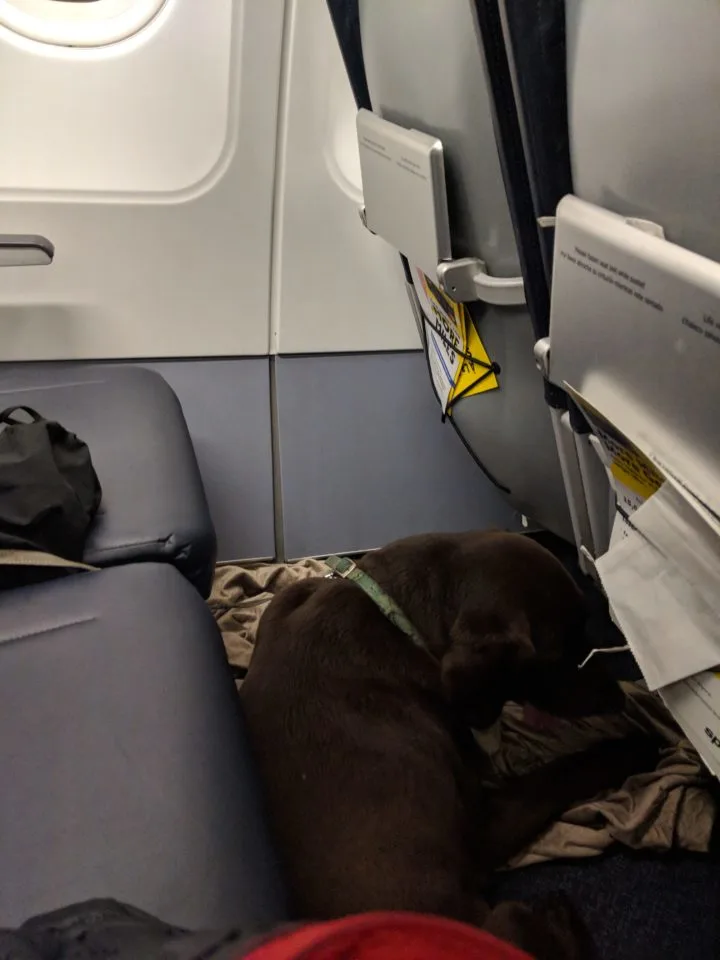Travel anxiety – it is not uncommon and it affects both people and their pets. For people, it is perfectly normal to feel various levels of anxiety in the lead up to taking a journey. For pets, the travel itself can be a stressful time too.
You can help your pet during travel, and they can help you too. With a little forward planning, there are ways to make traveling a less stressful time for both you and your pet.
Help Reduce Any Anxieties for Your Pet
Being in an unfamiliar form of transportation or location or strange people can be a stressful time for any animal. Some pets like exploring new terrain and environments, others not so much! Help them out with a bit of planning and preparation before you go to prevent or reduce any nervousness they may experience.
- Get your pet checked by your vet to make sure they are well enough to travel by the type of transport you are planning. This is especially important if you are flying, or if your animal is very young or very old, or if they have an existing health condition. Your vet may have some good tips for how to make your particular pet comfortable and at ease.
- Desensitize your pet to any carriers or harnesses you are going to use during the journey. Many pets have an existing association of their pet carrier with being unwell and a trip to the vet. Make these items a friendly place for a few weeks ahead of time with toys, treats, and plenty of positive reinforcement.
- If you are traveling in your own vehicle, make sure your pet will be secure if you have to stop suddenly. A small animal can become a flying projectile! Also make sure they have adequate ventilation at all times, and are never, ever left in a hot car.


- Socialize and train your pet to be around other people and respond to your touch and/or commands. Dogs should be able to respond to your instructions to stay calm, by your side, and not be disruptive to other people.
- Pack your pet some basic supplies. Water is a must to keep animals hydrated, especially during air travel. Take a small amount of their regular food in case you are delayed.
- Take a comfort item for your pet. They might have a favorite toy or small blanket they like to nuzzle that you can take with you to provide them some familiarity.
- Be prepared to clean up. Even pets that are meticulous about their toileting can have accidents when traveling. Take along paper towels or wet wipes and disposal bags.
- Use small treats along the way to reward your pet for taking the journey with you!
Beat Your Own Anxieties with an Animal by Your Side
Many people experience pre-travel anxiety at the best of times. It’s normal. There’s a lot to think about – what you need to pack, what paperwork and documentation you need. It can be a stressful time. The journey itself can be even more daunting if you have a condition such as agoraphobia or a fear of flying.
Do You Have A Pet or Could You Benefit from an ESA?
If you experience anxiety as part of an emotional or psychological condition you may be eligible to formalize your pet as an emotional support animal.
- Under the Air Carrier Access Act (ACAA) people who need their emotional support animals by their side in the cabin during a flight, or at their destination, can fly free of charge on domestic airlines.
- Conditions that can be eligible for an emotional support animal include panic disorders, post-traumatic stress disorder, depression, anxiety, mood disorders, phobias, social anxieties, and many more.
- The presence of the animal helps a person to remain calm and relieve symptoms and is part of the person’s overall treatment plan for their condition.
- Airlines will require legitimate documentation in the form of an emotional support animal letter that verifies that you are eligible for an ESA. Airlines can also ask for at least 48-hour’s notice in advance, so always check ahead.
Check Airline or Transport Provider Animal Policies
Whether you are planning on taking an animal on a flight or other form of transportation as a pet or an emotional support animal, always check with the provider’s individual policy well in advance.
- Airlines all have their own individual policies for bringing animals on board. These will detail what you need to do with your pet before and during the flight.
- Usually only certain numbers of animals are allowed on each flight on a first come first served basis.
- Check the airline policy for specific types of carriers needed for your animal. They may have certain requirements for size, construction, and materials. Some airlines will only allow pets to travel as cargo, in the hold.
- Depending on the airline, they may also ask for documentation such as evidence of health checks, suitability to fly, behavioral training, and vaccinations.
- Many airlines have restrictions on breeds and species for the safety of both the pet and other people. For instance, brachycephalic or flat-faced cats and dogs such as Pugs and Persians can have problems breathing in the pressured environment of an airplane so carriers may not take them. Breeds and species considered dangerous can be a risk to the health and safety of other passengers, and many airlines will not fly them.
For Your Own Piece of Mind
Make sure all your own paperwork and that of your pet is current and up-to-date before you go. Even if you have supplied it in advance, keep it on hand and easily accessible while you are traveling in case you need to show it again. This may include:
- Animal health and behavioral documents such as vaccination certificates, training records, and health checks.
- Your ESA letter, if you have an emotional support animal.
- Identification on your pet such as a collar or tag. Include details of your pet’s name, your name and how you can be reached in case you are accidentally separated.
Enjoy Yourself!
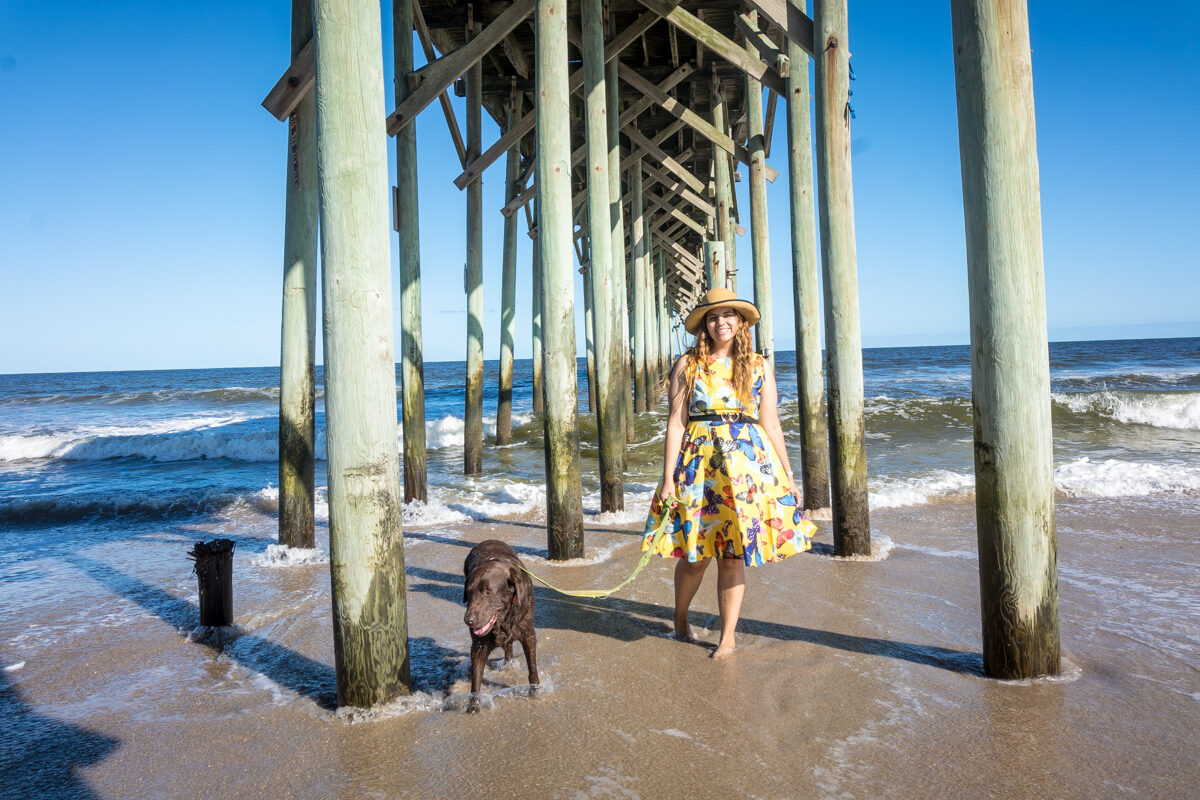

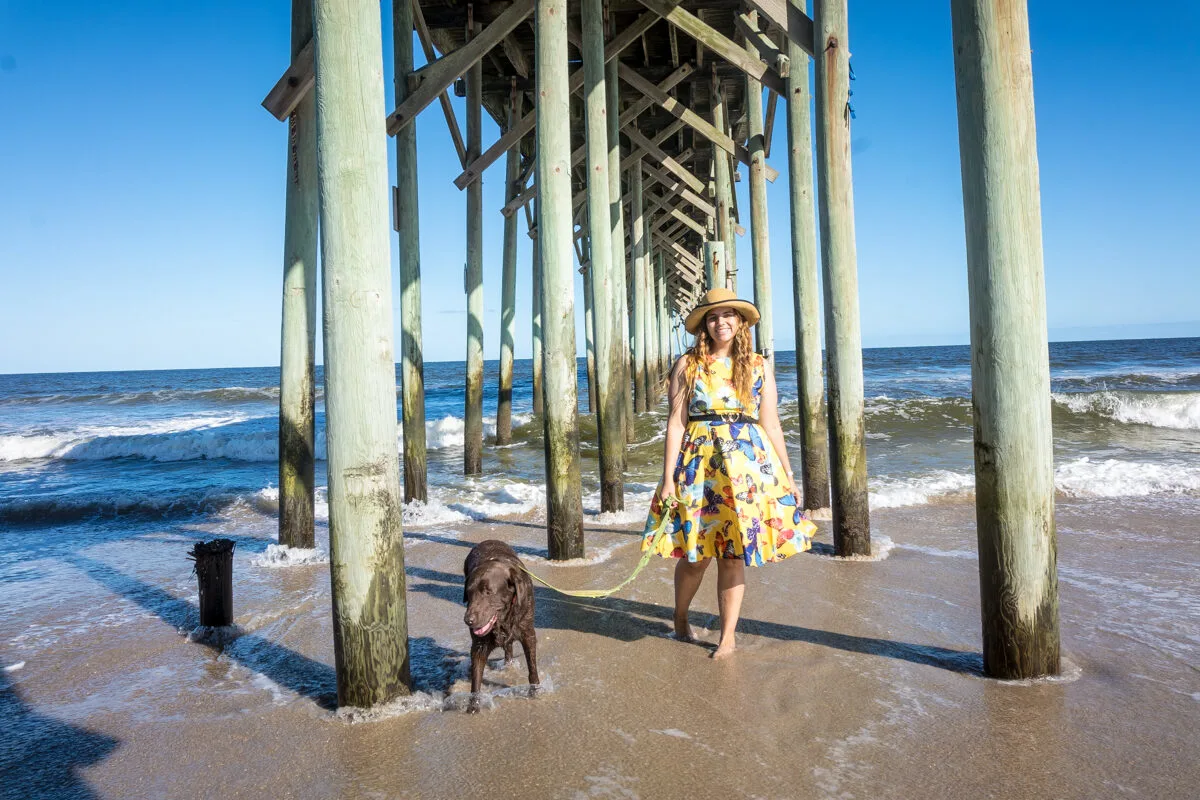

When you’re in transit, enjoy yourself as much as possible on the journey. Stay by your pet’s side as much as possible. Contact with each other can be beneficial to you. They will be reassured by your presence, whether it’s just your hand they can see and smell on the side of their pet carrier, or your calming touch.
Save this article for later:
